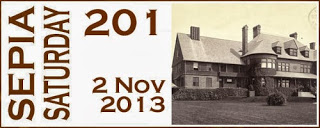 This week’s topic for Sepia Saturday 201 is houses and fits perfectly with a story I’ve been contemplating for some time. It will also link to my Book of Me stories about my childhood house.
This week’s topic for Sepia Saturday 201 is houses and fits perfectly with a story I’ve been contemplating for some time. It will also link to my Book of Me stories about my childhood house.
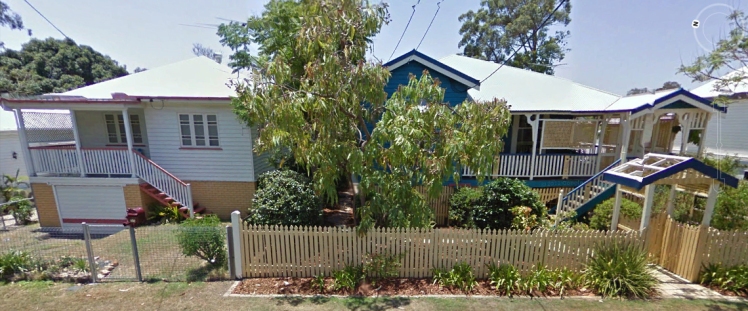
Back in July 2013 my mother sold the house my parents lived in virtually all of their married lives – they’d lived next door with my grandparents for a year before I was born.
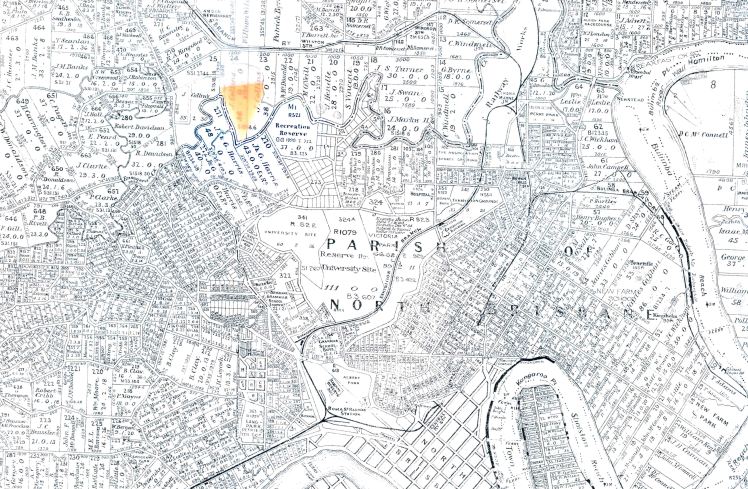
With that simple move to a retirement unit, all shiny and new, a tiny piece of Brisbane history slipped away. Yes, definitely a piece of my own family’s history, but also an unnoticed change in a near-city suburb. The sale of my childhood home was the final break in our family’s link to the street, after nearly 96 years. In Australian terms this is a quite an extensive association with an area, especially in an urban environment.
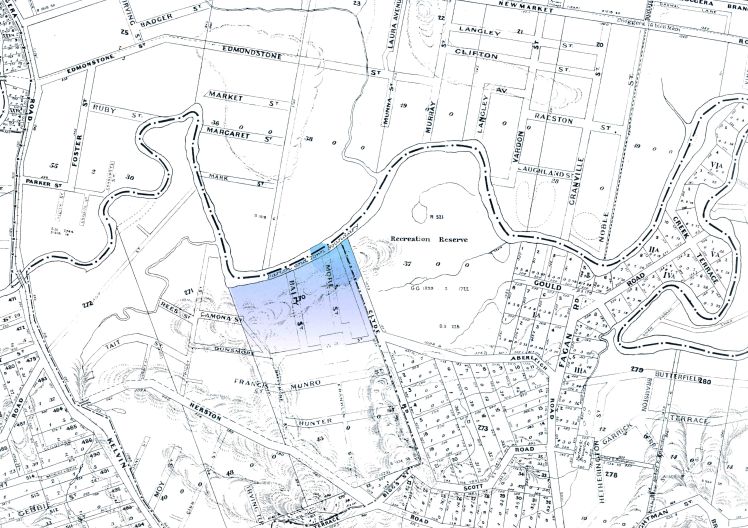
You see, back in September 1917, my paternal grandfather was relocated back to Brisbane by the Queensland Government Railways. His railway employment card makes it clear he’d been in Gympie since mid-1911. (I was very lucky to find that card in the old railway offices in Ipswich back in the late 1980s). Family anecdotes tell that Grandad had boarded his young brother Ken with a woman in Kelvin Grove, after all the children had been orphaned in 1901. The carer was later said by Ken to have been quite cruel or at least demanding, but if any of the anecdotes hold water, I’m sure my grandfather can’t have known this or he’d have moved Ken elsewhere. My concern with the stories is that the timelines don’t quite gel for me.
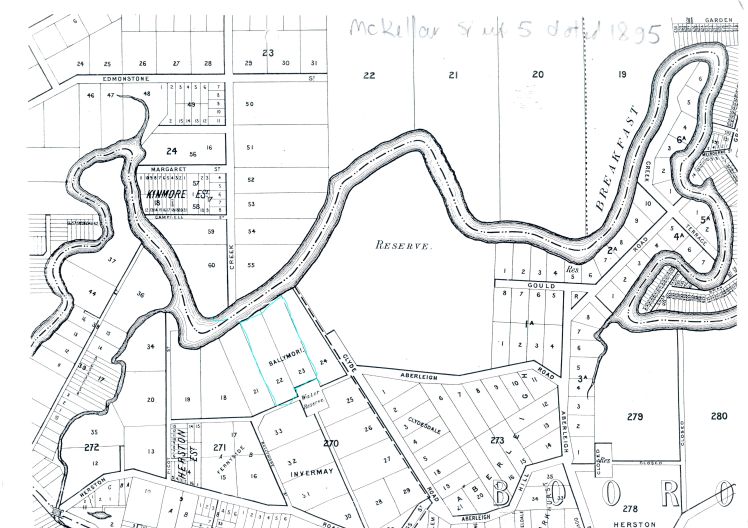
At any rate when Grandad moved back to Brisbane he bought a block of land in Bally Street, so perhaps this was indeed were Ken had been living, and how Grandad came to know of it. The Ballymore estate had only been subdivided for resale in 1912 and before that had been called Ballimore – the large block of land where Ballimore House had been remains intact but the house is no more, supposedly destroyed by fire.

Grandad’s purchase and title deeds are documented as 13th September 1917 and the block he purchased was re-subdivision 29 of subdivisions 22 and 23 from the original Portion 270 granted to John and George Harris. The block of land was 16 perches and it was this block that my grandparents gave to my parents after my birth. On 22 October 1917 my grandfather enlisted in the Railway Unit and headed off to northern France.
In December 1920, on his return from overseas, Denis purchased the adjoining allotments, 30 and 31, a combined block of 32 perches block from the woman who was said to have been Ken’s carer. Denis built his house in the middle of the three blocks, but the date of construction is something I still don’t know, though Brisbane Council valuations may help as the valuations should increase around the time of building. My guesstimate is that it was built before my grandparents’ wedding in April 1922.
My grandparents’ house was sold, some years after Grandma’s death, c1980, so around sixty years after Grandad took ownership of the block. It has been substantially upgraded since then, though superficially is recognisable as the same house. I wrote in some detail about it in 2011, as part of the 52 Weeks of Personal Genealogy and History series, and also here in terms of the red tape surrounding houses. I also worked the electoral rolls over to analyse the history of the street, its residents, and their occupations. You can read the two stories here and here.

I’ve mentioned before that sewerage maps can be incredibly useful – a tip I learned from a talk given by Susie Zada. This area of Brisbane was sewered quite early: the Council approved a budget of £19,167 in February 1939 (thank you Trove!) However the maps themselves predate this by seven years, and since many of the houses in the street are indicated by their names, it will make it easier to link the people on the electoral roll to them, an unexpected benefit. Who’d have thought it was interesting to know where one’s grandparents’ dunny was?
After my parents took ownership of the block initially purchased in 1917, my grandparents’ house was moved a few metres to the right, and my childhood home was built. Over the decades the house was extended slightly, to include a front verandah and carport, and an extension at the rear for a sunroom.
And so, with the sale of all three blocks of land, and the two houses, a link was broken with the establishment of this Brisbane suburb. A small, unremarked part of personal and local history disappeared along with the family’s 90+ year residence in the street. Or as Mr Cassmob puts it succinctly “there goes the last of the originals”.
Meanwhile the mango tree, planted when my father was born 90 years ago, remains sentinel to the family’s erstwhile presence.

There has been a local history published of the area, Herston, Recollections and Reminscences. It adds valuable background to the area’s history something which is lacking for many suburbs. However it also suffers from a lack of footnotes, and a typical omissions of local histories: the tendency to source information from a familiar section of the community. So it’s ironic that my father, who at the time had lived in the area for over 70 years, was not consulted,when he could have added so much.
For example he would easily have corrected what I believe to be an error on page 15, where it is stated that Ballymore House “would probably have suffered several floods before a fire reputedly damaged the interior….and it has since been demolished”. My conversations with Dad confirm that as far as he was aware, the street had never been flooded, making in fact highly unlikely that Ballymore House had suffered flooding since it was on the higher side of the street. The error probably arose because while the tributary of Breakfast Creek is very close in horizontal distance, the height above the creek means any flood waters are absorbed into the parks across the river.
My criticisms are probably churlish given the depth of information provided on the suburb, but it remains frustrating that more could have been added. The wonderful resource of Trove would no doubt have added all sorts of little snippets that would once have been nigh on impossible to find in the newspapers.
Herston, Recollections and Reminiscences, DJ Hacker, DR Hallam, M Spinaze, Brisbane 1995.
The 1930s photo of your grandparents’ house is a delight.
LikeLike
Thanks Boobook..did you spot the horse?
LikeLike
A lovely well researched family history story encompassing the 96 years on one street. But how sad that your father’s extensive memories were not taken into account with the local history publication. . You have redressed the balance here. . .
LikeLike
Thank you Susan, I really value your comments.
LikeLike
Such research! Great to pass down to your children.
LikeLike
Thanks Rosie.
LikeLike
Excellent work! Who would ever think to check sewer maps for family history. I love that! The early photo of your grandparents’ home in the middle of that block makes for an interesting comparison with the current photo showing your parents’ home next door.
LikeLike
Thanks Wendy. Yes, who would have “thunk of it” re sewerage maps. It’s interesting isn’t it how photos sometimes show us more than they’re originally intended for.
LikeLike
How nice that you have the older picture from your mother as well as the present one. History does indeed slip away,…ah if only all of us had the wisdom to ask the right questions of the right people. It is fortunate that there is a record of history of the area, even with inaccuracies. It’s a nice post Pauleen, Thanks 🙂
LikeLike
Yes I only got the old picture when Mum moved and it’s great for its perspective on the area. Wise words that some history is better than none. Cheers Pauleen
LikeLike
Very clever spin on the theme to map a home. I had to look twice for the horses though. And I learned a new word: “sewered”
LikeLike
Very well researched and written. I love the old Queensland homes. So much character and charm.
LikeLike
You must have had to put a lot of work into this to give us so much detail. I wouldn’t know where to start to get maps like that for our neighbourhood with houses dating back to the 1700s and some less than 10 years old.
LikeLike
Thanks Bob, some advantages to having a shorter House history here 😉
LikeLike
Not only are you a great family historian, but you rock as a social historian as well. So well done and so interesting. Unfortunately for us farm folk, sewer maps don’t have much meaning — except when the septic tank overflows, then of course, we know right where it is.
Thanks for a great insight into your family history in Brisbane.
LikeLike
Thanks Joan that’s high praise from you with your skills.
LikeLike
I had to laugh about the sceptics. Know exactly what you mean.
LikeLike
What a wonderful history of your family houses and neighborhood, complete with maps and photos. 96 years is longer than I’ve been able to document any of my family living anywhere.
LikeLike
Thanks Kristin, yes in the throes of the packing the significance of Mum’s departure from the street didn’t quite grab hold of my mind, but it’s a tiny snippet of local history. I’m surprised you haven’t found houses that far back given all your wonderful research into houses and streets.
LikeLike
My family members moved before they had lived anywhere for 96 years. The longest is probably 40 something years. The houses that they lived in 96 years ago are all gone. Except the house my father was born in and he lived there less than a year.
LikeLike
It’s a shame that all the history has gone Kristin, even though they may not have lived in one place for >40 years.
LikeLike
I echo the thoughts of everyone before me, and now I have the song, “Underneath the Mango Tree” in my head!
LikeLike
Thanks Kat, and I’m sorry about the ear worm….I had a Roy Orbison one in my brain for weeks. You’ve reminded me of a Graeme Connors song “Mango Shade” which sent my brain flying to his song “Cyclone Season” which we’re coming up to….how one’s mind runs amok.
LikeLike
I’m rubbish at maps and as soon as I see ‘chains to the inch’ it takes me straight back to my primary school exercise book and makes me shudder. I do applaud your research however and I really like photo of your grandparents’ house.
LikeLike
I know what you mean about “chains to the inch” Little Nell, but I do love maps. Thanks for your support despite your map allergy 🙂
LikeLike
What great research you’ve been able to do on the houses, the street and the area in which your family lived for so long – very impressive!
LikeLike
Thanks Jo! It’s amazing what’s there to turn up.
LikeLike
Love the house photo, is it looking towards More St, I am interested in the history of the Ballymore Estate from 1912
LikeLike
No, it’s on the More St side of Bally St. I’d be interested in what aspects of Ballymore Estate you are researching.
LikeLike
This is fantastic, thank you. I am interested in this Estate – one of the earlier homes I believe circa 1900 named “Ballymore” but very hard to find information!
LikeLike